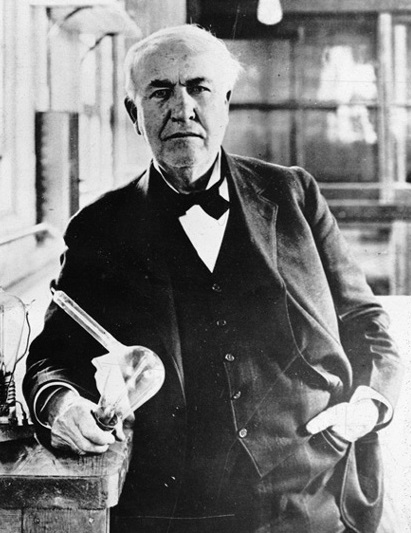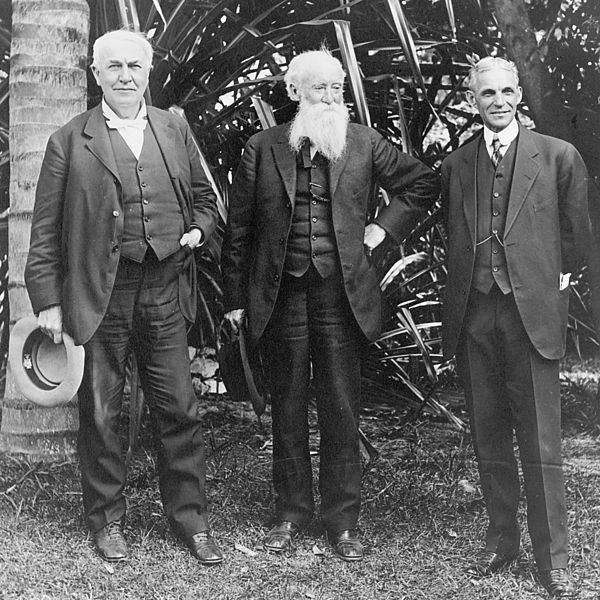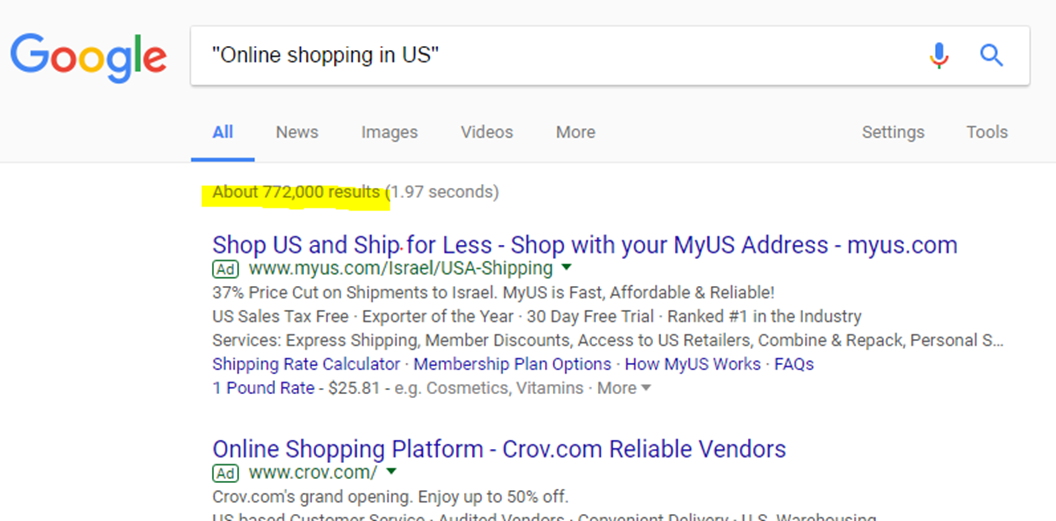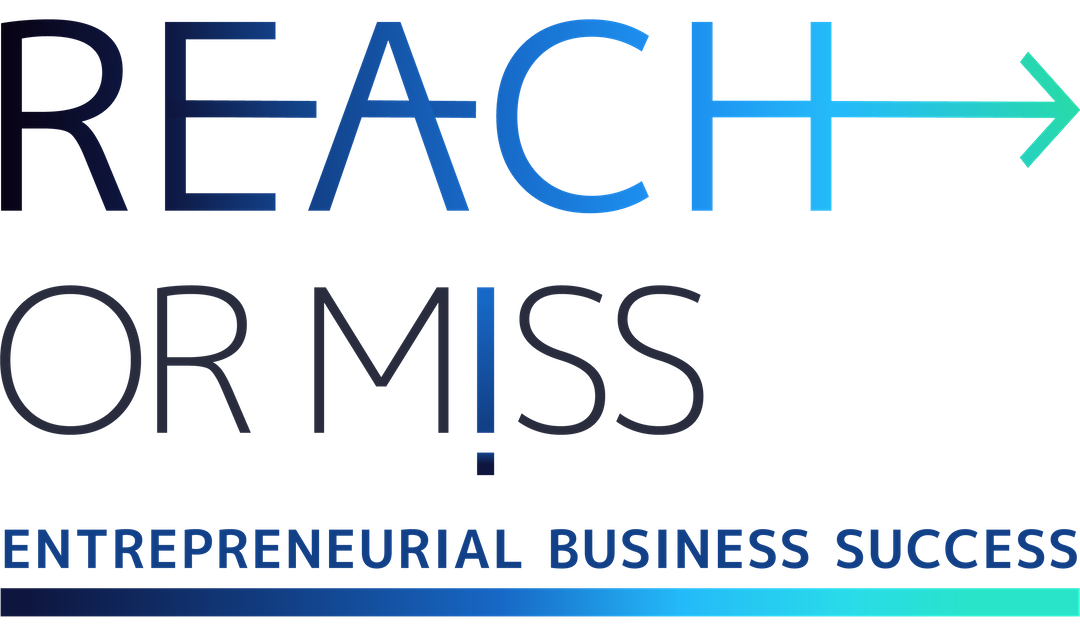Guide: The three free, practical steps to researching and finding your market

Entrepreneurs challenge – How to find a potential market for a new product?
What if I conduct consumers’ research in the 19th century in Thomas Edison’s times, and ask whether they are going to use the electric light bulb, what would their answer be?

Thomas Edison, John Burroughs, and Henry Ford, at Edison’s home in Ft. Myers, Florida. 16 March 1914
Market research is one of the trickiest things for entrepreneurs. Trying to understand market behavior for a product, which doesn’t exist yet, based on a need that, many times, the customers are not totally aware of is a tough mission.
Yet, entrepreneurs are required to provide market insights as well as customers’ analysis in the situation of fund raising and financial planning, as well as in order to gain customers and to build brand perception – the two core elements of a company’s value.
There are many tools out there that are meant to help; like conducting free surveys, get customers’ responses, and search the market. Unfortunately these researches won’t give you the right market perspective you need. For two reasons:
- As human beings, we are incapable of predicting how we are going to react to a non-familiar product or situation.
- In order to analyses the potential market, talking with potential users is a must but definitely not enough.
The three steps of effective, reliable, and free market research
The combined methods:
In order to get the ability to look at an existing market from a bird’s eye and objective view, and get good enough insights of the future market, we will use two different methods: The method of combined sources, with the method of qualitative research*:
The combined resources’ research means using different points of view. The research will include:
- Internal insights about the company and product
- A wide market online analysis and
- external interviews
“Qualitative Research is primarily exploratory research. It is used to gain an understanding of underlying reasons, opinions, and motivations. It provides insights into the problem or helps to develop ideas or hypotheses for potential quantitative research” (SnapSurveys.com).
The idea behind a qualitative research is using open, objectively put questions and allow a deeper, more relaxed conversation.
Research objective: To find where your startup/company’s biggest market opportunity is.
Uses:
- Fundraising
- Building your financial business plan
- Gaining maximum customers and incomes in the shortest cheapest way
1st step – Internal interviews
As an entrepreneur, your whole company and product is built on you (not like traditional companies).
That’s why, the smart first step should be to learn exactly what is unique and the greatest advantage about you and your product.
(From there in the 2nd step we study the market trends to find the biggest opportunity for your unique product. That will enable you to be faster than any competitors)
The interviewees is/are only the founder/s. It’s much better if a third party who knows your idea or company will ask you (each founder) the questions and will write the answers for you. Alternatively, write the answers yourself (each founder should answer these questions by himself).
The 4 main interview questions**:
- What is the precise definition of your product/startup?
- What is the one factor that will affect your success most?
- What is the one factor that might cause your failure most?
- What will you do and where would you start if you want to bring right now as many customers as possible to use/buy your product?
To get the exact full interview script and guidance, push this link
2nd step – market analysis
There are two objectives for the market analysis
- To get all the relevant statistics that might be relevant to the future market (without unnecessary expenses) of your company
- To understand the minds of your potential users in regard to the solution we offer
The market analysis (or market mapping) by Gaia Model* is based on the fact that today the entire discussion, as well as all relevant information, can be found on the Internet. We can learn almost everything about our potential target audience because of the way Google tracks and ranks the information. The challenge is to find it, and to make sure we get a balanced and reliable picture of the market.
The 4 basic steps of the free future market analysis:
- Prepare a list of all the relevant markets, categories, and fields that are related to your product.
For example, if you are an entrepreneur who is just starting a new online camera business in the US, your research list might include these relevant fields and markets:- Online shopping in US
- Global online shopping – cameras
- US online shopping – cameras
- Online shopping channels (Amazon, Ebay, Shopify etc.)
- Online retail market
- Cameras Market global and in the US
- Cameras VS. Smart phone camera’s feature
- Unique cameras in the digital edge (GoPro, surveillance cameras etc.)
- Ecommerce sites – competitors
- Ecommerce sites for cameras – competitors
- Benchmark
- The main questions you should look at, regarding each category (1):
- Market definitions
- Market size – value (money) and volume (units)
- Trends and tendencies in the industry
- Main Customers (target audience)
- Segmentation – geographical, demographical etc.
- New tech success / failures
- Key players
- Competitors
- Prepare a list of all the different expressions that are related to your product idea. (Meaning: what people might search for through Google if they look for it? Each precise option they could use)
- Search for each expression in Google, put it between “apostrophes” and see how many results are there. That will tell us exactly what markets to look for.
Then, look at the main answers. Who leads the market, what are people looking for?
Use the same exact expressions in Facebook, LinkedIn, Twitter, Instagram etc. See which groups, companies, people, pictures will come out? That will tell you a lot of this market.

3rd step – External interviews
Now it’s time to talk with some potential and existing (if applicable) customers.
Base on your findings and thoughts from the two earlier research steps (without any summaries yet), come out with a list of 4-6 different personas that you want to talk with to better understand your potential customers. Use your friends, social media contacts, and groups or colleagues to find people from different places (countries, states, cities) and characters (job positions, age, gender, family situation) and have 15-30 minute phone/Skype (and the like) open conversation.
Open conversation means you ask them open questions (see below). Not yes or no questions, but more expressive questions.
What we want to hear from these external interviewees is:
How they describe their need/use/thoughts on the issue/problem your product addresses? What are their concerns/what bothers them? What did they do about it in the past? Why? Where? Etc.
The questions you should ask are very open and general, then ask more specific questions about their answers.
Let’s take the example of the camera website we talked about before; our potential interviewees will be probably people who like to take photos and use cameras.
A general example of open questions I could use at this situation:
- Tell me about photography (and listen to what will they choose to tell).
- Have you taken photos (through a camera) during the last week? Of what (they’ll probably talk about it by themselves before you’ll get to ask)? In what situation? Of whom etc.
- When did you start taking photos? (They will tell you their story…)
- What was your first camera (They’ll probably tell you exactly how they got it, who bought it and from where, when etc.)? If they won’t, ask them these questions.
- Which camera are you using today? How did you get it (where, when etc.)? Why this one?
- Did you ever buy camera through an online shopping site (If yes, ask them about their shopping experience, how did they get to the site? Which other site did they try? What made them choose this one? What camera did they buy? Etc. etc.
- If the answer is no they won’t, ask them how come? Why not? Did you try? And listen carefully to each answer)
Ask any question you are interesting in, however you probably figured out already that in a deep, open interview we ask as open (not guided) questions we can and listen a lot. Until they stop talking and there is a silent for 1-2 seconds. Only then you can raise more questions on the subject.
And of course, write or record (with their permission) every answer.
Summary
If you followed this guide, step by step, you now have all the information you need.
How to bring it all together to get the conclusions you look for? You should use the way that works best for you and allows you to go over all of the information until you have all the answers you need to present the information and to start gaining your customers and sales.
* The combined methods are part of the Gaia model copyrights
** These questions are part of the Gaia model copyrights
